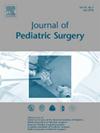Conservative Management of Pediatric Patients With Appendicolith Appendicitis Versus Non-appendicolith Appendicitis: A Systematic Review and Meta-analysis
IF 2.4
2区 医学
Q1 PEDIATRICS
引用次数: 0
Abstract
Introduction
Up to one-third of pediatric patients with acute appendicitis present with radiological evidence of appendicoliths. However, whether appendicolith presence influences prognosis under conservative management compared to non-appendicolith appendicitis remains uncertain.
Methods
We systematically searched PubMed, Cochrane, Embase, and Web of Science databases for studies comparing pediatric appendicolith and non-appendicolith appendicitis managed conservatively with antibiotics, fluids, and percutaneous drainage. Outcomes included the initial success of conservative management and recurrence rates. A random-effects model was applied for all analyses.
Results
Twelve observational studies with 814 patients were included. Of these, 282 (35 %) had appendicoliths, and 532 (65 %) did not. The average age ranged from 2 to 11 years, with follow-up between 1 week and 2 years. Overall, there is no significant difference in the initial success of conservative management was observed between the two groups (OR 0.70; 95 % CI 0.28–1.78; p = 0.46). Subgroup analysis revealed lower success rates for appendicolith-associated simple appendicitis (OR 0.42; 95 % CI 0.21–0.84; p = 0.01), but no difference in complicated appendicitis (OR 1.01; 95 % CI 0.24–4.31; p = 0.99). Recurrence rates were significantly higher in appendicolith appendicitis across both groups (OR 2.75; 95 % CI 1.05–7.20; p = 0.04).
Conclusion
Appendicolith presence reduces conservative management success in simple appendicitis, supporting early appendectomy. Although appendicoliths do not predict treatment failure in complicated appendicitis, interval appendectomy may be advisable due to the higher recurrence risk in both groups.
Type of Study
Meta-analysis and systematic review.
Level of Evidence
Level I.
求助全文
约1分钟内获得全文
求助全文
来源期刊
CiteScore
1.10
自引率
12.50%
发文量
569
审稿时长
38 days
期刊介绍:
The journal presents original contributions as well as a complete international abstracts section and other special departments to provide the most current source of information and references in pediatric surgery. The journal is based on the need to improve the surgical care of infants and children, not only through advances in physiology, pathology and surgical techniques, but also by attention to the unique emotional and physical needs of the young patient.

 求助内容:
求助内容: 应助结果提醒方式:
应助结果提醒方式:


